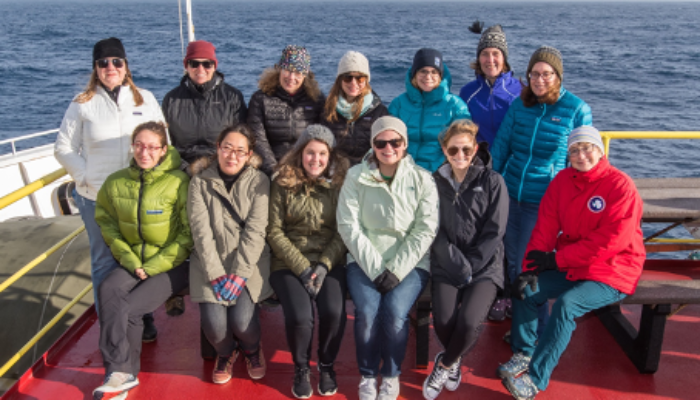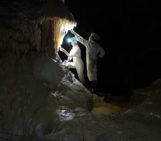
As I read the abstract of ‘Women in UK Ocean Science: Experiences of female leadership roles at sea’ by Katharine Hendry et al., it reminds me my own experience at sea! Indeed, more than one year ago, I had the chance to join the IODP Exp 379 in the Amundsen Sea (Antarctica) which was co-led by a woman, Julia Wellner from the University of Houston. It was her first IODP (International Ocean Discovery Program) expedition, but not her first time in Antarctica, having worked there several times with the National Science Foundation (NSF), particularly on the Thwaites Glacier.
But she was not the only women scientist on this expedition, in fact, there were 11 women from PhD students to senior scientists plus two outreach officers who were also women. But even with that number of women, we were still not in the majority, and I was the only woman in a team of 7 micropalaeonotlogists. The important thing was though – we were there!
Now, we, as women, we don’t have to wait like Marie Tharp did in 1965, for 16 years before being allowed on an oceanographic research vessel. So, women should definitely keep participating in oceanographic expeditions – because we are now part of it! But is our participation now equal to the participation of men? This is the main question that Katharine Hendry and Sophie Fielding are trying to answer by looking at data from four of the UK’s ocean-going research vessels (RRS Discovery III, RRS Discovery IV, RRS James Clark Ross and RRS James Cook).
When I spoke with the authors they told me that work is ongoing and that they are keenly investigating the issue of widening participation in UK marine science, but that there is a positive story involved in terms of greater diversity and inclusivity, mostly driven by early careers researchers. However the stage that the work is at right now means that the authors are not ready to share these data publicly, saying “harvesting historical data for presentation of gender, is not the same as asking people for self-validation, we need to ensure that any method we use is transparent in terms of biases and presents inclusivity”.
After speaking with the authors about the results, the main question I have now is: How can we improve the visibility of women in these roles? We know that women are here, so why don’t we usually hear stories celebrating them and their major roles in the field of sea-going science? One of the first solutions to improve this visibility could be to setup some new policies in naming awards or rooms or buildings after female marine scientists. In the UK, there has been some progress along these lines but more could be done and especially in other countries as well. The other idea, could also be to increase the visual representation of women within our own research institutions, particularly on official websites and social media.
Of course, this work is still on-going and the authors were keen to point out that more precise results are coming soon, but at this point it’s safe to say that, although we have come a long way from the times that Marie Tharp experienced in the 1960’s, we have some way to go still.




